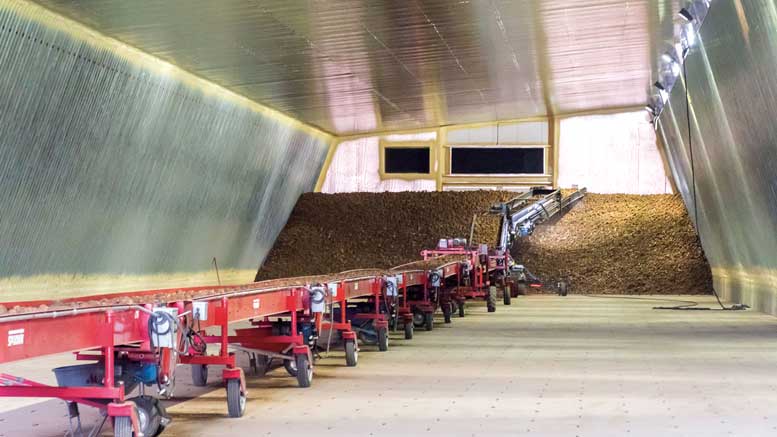|
Click to listen to this article
|
Colorado Seed Potato Crop
By Andrew Houser, Colorado Potato Certification Service
We had a very dry spring, but the planting of the seed crop went well. All seed production is dependent on irrigation, mostly from groundwater. Even though our spring was dry, there were several rain events throughout the summer, which was a blessing.
Certified seed growers began killing vines in late July and continued through early- to mid-August, limiting potential spread of virus by late-season aphid flights. Overall, crop yields hovered around average. Our post-harvest test is again taking place on the North Shore of Oahu, Hawaii.
Colorado certified seed potato acreage for sale and grower plant-back was up from 7,784 acres in 2021 to 8,151 acres in 2022. The 2022 accepted certified acreage after summer field inspections was 7,784 acres. Rejections were primarily caused by PVY/mosaic and blackleg. Total potato acreage in the San Luis Valley was 49,804, up from 48,265 acres in 2021. The top five certified varieties in Colorado are Russet Norkotah selections (2,502 acres), Canela Russet (727 acres), Reveille Russet (514 acres), Soraya (413 acres) and Teton Russet (265 acres).
The 2022 certified seed directory is posted online at http://potatoes.colostate.edu/programs/potato-certification-service/crop-directory.
All seed lots imported into Colorado are required to undergo a post-harvest test, a lab test for PVYN and a lab test for late blight to comply with the Colorado late blight quarantine.
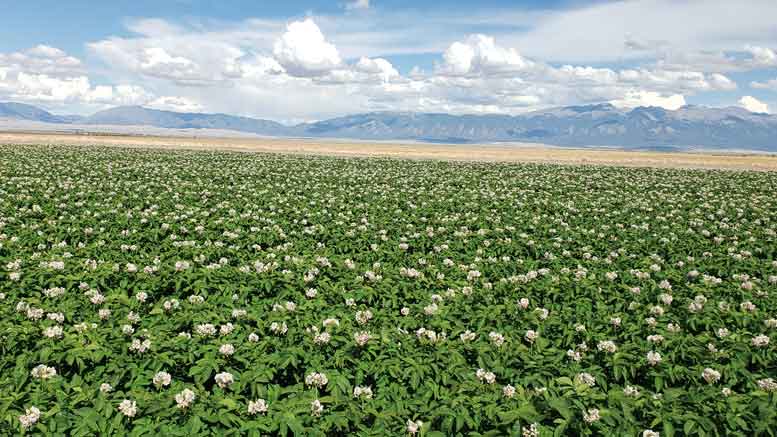
Idaho Seed Potato Crop
By Alan Westra, Idaho Crop Improvement Association
Planting of the 2022 Idaho seed potato crop started on time and was completed without serious interruption in significantly cooler than normal temperatures. These cool temperatures continued well into June. While the cool weather helped to mitigate concerns regarding potential water shortages, it also significantly delayed emergence and retarded plant growth. Temperatures became more seasonable in late June/early July, but the increase in temperature was not sufficient to make up for the early shortfall in heat units. As a result, Idaho effectively lost two weeks of the growing season.
Seed quality going into storage is reported as excellent. Generally, the 2022 seed potato crop can be described as having a high set and smaller than normal size profile. As might be expected, yields are generally lower due to the smaller tuber size.
Seed health is also good. During summer inspections, the number of seed lots with visually detectable levels of Potato virus Y (PVY) decreased compared to 2021 and remains well below the 10-year average of 7.8 percent. Blackleg levels were normal, and there were no detections of potato leafroll or bacterial ring rot again.
Seed potato acreage eligible for final certification totaled 30,164 acres in 2022, a 2.5 percent decrease from 2021. Excluding proprietary genetics, this acreage represents 103 varieties, selections and advanced clones. Ten varieties account for more than 80 percent of the total acres, with Russet Burbank, Russet Norkotah (all strains), Ranger Russet, Clearwater Russet and Alturas continuing as the dominant varieties. A complete listing of the seed potato crop is available in the 2022 Idaho Certified Seed Potato Directory posted on the Idaho Crop Improvement, Inc. website at www.idahocrop.com. Hard copies of the directory can be obtained by contacting the Idaho Crop Improvement Association Idaho Falls office.
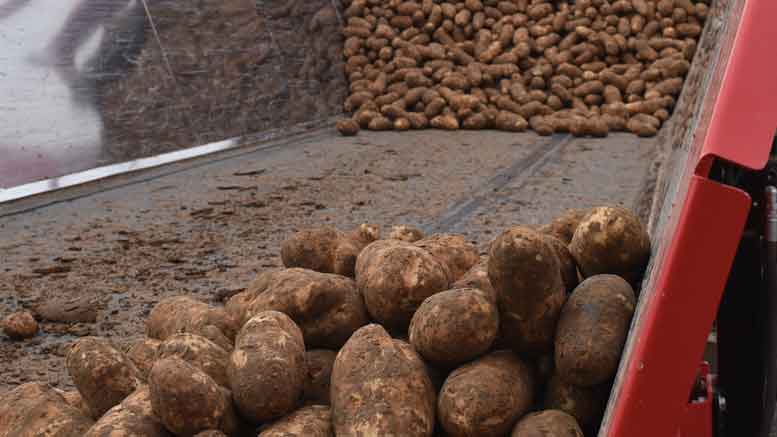
Montana Seed Potato Crop
By Nina Zidack, Montana Seed Potato Certification
Montana’s 2022 seed potato harvest was completed by mid-October with near perfect harvest conditions. Growers report excellent quality, and while yields do not stack up to the record crops of 2019 and 2020, compared to a longer history, they’re in the strong average category.
The growing season presented challenges, particularly with the very cool June followed by hotter than average temperatures in July and early August. These conditions led to a delay in tuber bulking in some varieties. Some growers delayed vine kill seven to 10 days to allow the potatoes to bulk adequately at the end of the growing season. Overall, Montana growers are very pleased with their crop and anticipate an excellent grade-out in the spring.
Montana reached an all-time high acreage in 2022 with 11,322 acres. This represents a 3.6 percent increase over 2021 and an 8.8 percent increase from five years ago. While Russet Burbank is still dominant at 3,600 acres, a significant increase in acreage over the past decade has been noted in Clearwater Russet, which now holds the second position at 1,589 acres. Clearwater was released by the Potato Variety Management Institute in 2009 and first planted in Montana in 2010. It is the only new variety to break into the top five during that time. Umatilla Russet is now the third most widely planted variety at 1,542 acres, followed by Ranger Russet at 1,295 acres and Alturas at 722 acres.
If you count the acreage of all Russet Norkotah lines together, it would actually jump into the third spot at 1,480 acres. Of the Norkotahs, the Texas 278 line has the highest acreage at 556 acres, followed by Colorado 3 (304 acres), Texas 296 (289 acres), Texas 112 (244 acres), standard Norkotah (45 acres) and Northwest 90 (42 acres).
The variety that is quickly rising in acreage is Hamlin Russet, which was first planted in 2020 and is now at 97 acres. Ivory Russet, which was first grown in Montana in 2016, rose in acreage very quickly to 271 acres in 2020. It has since decreased in acreage to 169 acres for the 2022 crop. Chip varieties are a minor component of Montana’s production, and Lamoka, Atlantic and Snowden combined are 114 acres. The most widely planted colored variety is Norland Dark Red at 110 acres.
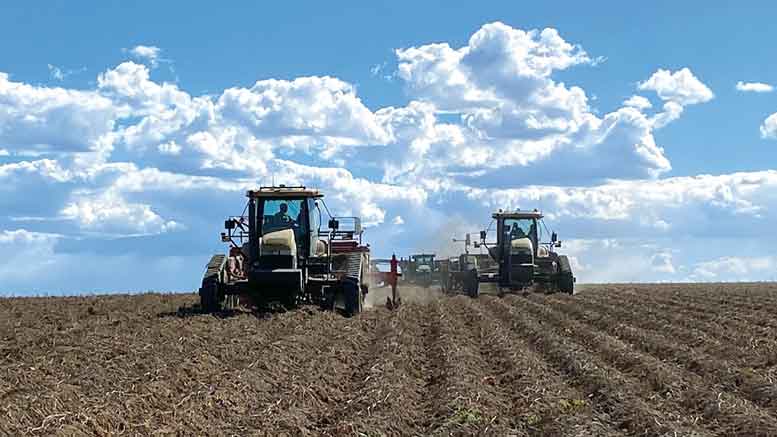
Oregon Seed Potato Crop
By Tami Brown, Oregon Seed Certification Service
Oregon Seed Certification Service accepted 3,082 acres of seed potatoes for certification in 2022. This increased Oregon’s 10-year average to 2,853. Disease levels have remained low, and there were no rejections. The only downgrade was for off-type. Two growers left certification due to water issues, and the continuing drought on the eastern part of the state is a concern for many growers.
It was an unusually wet spring for some areas, which created issues with planting. Again, we had a statewide spike in temperatures during the growing season. Wildfire season started later than in 2021 and, with the exception of one or two locations, did not have the abundance of smoke that Oregon dealt with that year. Fall was ideal for a successful harvest.
Clearwater Russet was the number one variety produced in Oregon for the second year in a row. Lamoka and the Frito-Lay varieties dropped slightly. Ciklamen and Gala moved up to second and third place. A complete listing of the varieties and acres produced and field readings can be found at http://seedcert.oregonstate.edu/potatoes.
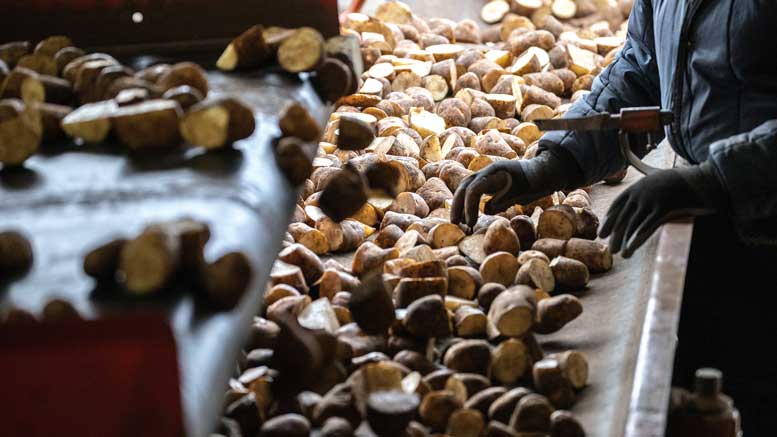
Washington Seed Potato Crop
By Benita Matheson, Washington State Department of Agriculture
A total of 3,736 acres of seed potatoes entered certification during the 2022 growing season. This is a 98-acre increase from 2021. Top varieties grown included Ciklamen (557 acres), Russet Burbank (307 acres), Chieftain (277 acres) and other proprietary varieties. The total acres planted included 133 potato varieties, ranging in size from partial-acre plots to 68-acre fields. Most seed lots are fewer than 20 acres and include numbered clones, table stock, processing and heirloom varieties. A complete report on seed lots will be posted at www.agr.wa.gov/services/licenses-permits-and-certificates/plant-permits-and-certification-programs/seed-potato.
In the Whatcom County isolation district, many fields were planted at the beginning of the planting season before extended rain and flooding. Growers experienced partial or total crop flood-out, and lots were plowed under. After flood and rain abated, planting was completed, but very late in the season, which resulted in a short growing season for many lots. Very little precipitation occurred during the actual growing season, resulting in very dry soil and requiring irrigation of killed/shredded fields immediately prior to harvest. Harvest weather was dry and cool, and harvest wrapped up in late October.
Yields are noted to be fair and average. WSDA noted little external damage to the tubers. Seed shipments to southern climates began in late fall and will continue into the winter months, with the majority of seed to be shipped in early spring.
Washington state certified seed growers are in the process of submitting seed lot samples for the post-harvest test that will continue in Hawaii.
